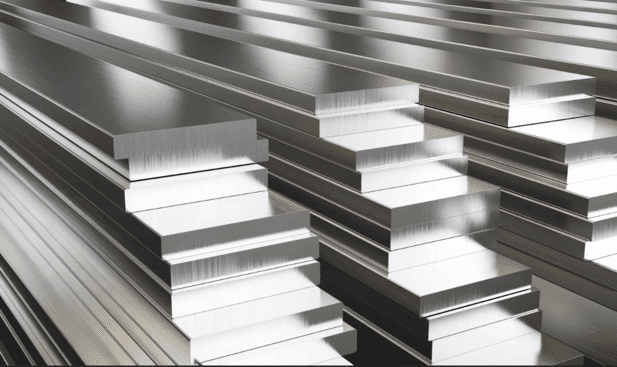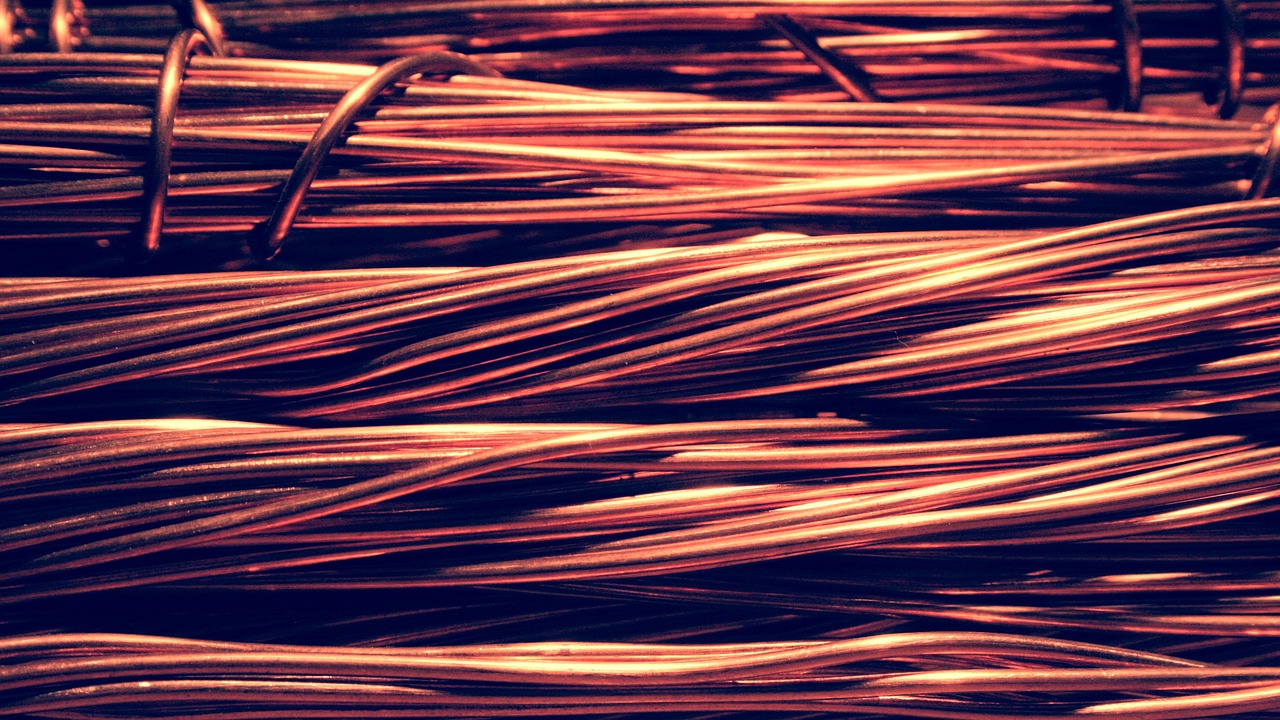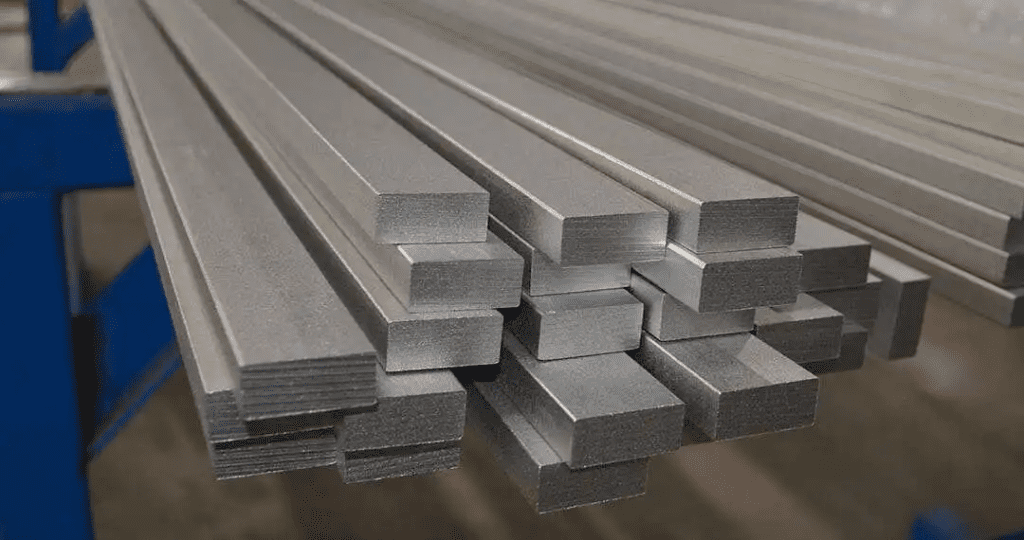
Look around you. There’s a good chance you’ve seen metal somewhere because it has become an essential material in modern life. Metals are available in two types: ferrous and non-ferrous.
Non-Ferrous Metals Definition
Unlike ferrous metals, non-ferrous metals tend to contain no iron (non-iron-based), making them highly resistant to rust and corrosion. On the other hand, ferrous metals like alloy steel, wrought iron, and carbon steel contain a significant amount of iron and are highly susceptible to rust. In their pure form, all metals are non-ferrous except iron.
So, what metals are non-ferrous? This type of metal includes zinc, aluminum, copper (bronze and brass alloys), lead, titanium, and nickel.
General properties of non-ferrous metals include high thermal conductivity, low density, non-magnetic, high corrosion resistance, and high mechanical strength. Due to this, plus its rarity, a non-ferrous metal is more expensive than a ferrous metal.
History of Non-Ferrous Metals
Humans discovered the first non-ferrous metal, copper, which was used to make objects during the “Copper Age” more than 10,000 years ago. Gold and silver, also known as precious metals, were also discovered during this period, and since they were rare to find, they were used to make luxury items.
Due to its malleability, durability, and ability to resist corrosion and rust, copper became man’s go-to priority, ditching stone and wood. And this is how copper became a popular material for making tools, weapons, and decorative objects.
The Copper Age paved the way for the Bronze Age, an alloy of copper and tin. This era occurred between 3300 and 1200 BCE, and with it came a significant advancement in technology and human civilization. The discovery of bronze influenced warfare, trade, and artistic expression. The Bronze Age was followed by the Iron Age, which started around 1200 BCE and marked the production of ferrous materials.
The Industrial Revolution brought significant advancements in the metallurgy industry after many years of using copper and bronze. As a result, discovering other non-iron-based metals, such as zinc, aluminum, and lead, was possible.
Today, non-ferrous metals are essential materials in the manufacturing industry, such as aerospace, construction, electronics, and automotive. Due to their high value, recycling non-ferrous materials in smelters, foundries, and refineries has become commonplace.
The global market for non-ferrous metals was US$1,079 billion in 2022 and is expected to reach US$1,459 billion by 2028.
Types of Non-Ferrous Metals and Their Unique Properties

The list of non-ferrous metals is long since every metal without iron is non-ferrous. We will list the most common non-ferrous metals, and since each metal has its features, we’ll also highlight its unique properties.
Various non-ferrous metals include the following:
Copper
Copper has been in use since time immemorial. The advancement of metallurgy has only made copper a vital material that allows other non-ferrous metals, such as bronze, to exist.
Copper’s attractive reddish-brown color makes it a good choice for plumbing, electrical power cables, electronic devices, and heat exchangers. It’s also highly ductile and malleable, excellent for high electrical conductivity and high thermal conductivity.
Furthermore, copper alloys have antimicrobial properties, which makes them a perfect choice in hospitals and healthcare facilities.
Aluminum
Aluminum is the most abundant non-iron-based metal on earth and one of the most recycled metals in the world. Its color ranges from silvery white to dull gray. Aluminum’s lightweight, easy-to-machine, non-sparking, and non-magnetic properties make it a widely used choice. It’s also easy to cast and forge.
Aluminum’s properties make it the best material for aerospace, automotive, packaging, and construction.
Zinc
Zinc is a bluish-white metal, although most commercial ones have a duller color. It has a low melting point (420oC), high corrosion resistance, and a moderately good electricity conductor.
With good corrosion resistance, zinc is a protective coating for ferrous metals (such as iron and steel) through galvanization. This process helps in making the ferrous metals more resistant to rust. Galvanized metals are suitable for car and bicycle bodies, solar racking and control panels, appliances, handrails, and water pipes.
Lead
Lead has a dull, lustrous, gray appearance with a relatively low melting point. It’s soft, dense, malleable, ductile, and a poor conductor of electricity. Lead is the most recycled non-iron-based metal.
Lead is highly poisonous when inhaled or ingested. Due to this, its usage is highly regulated in many industries. However, it’s still commonly used in batteries, ammunition, and radiation shielding.
Titanium
Titanium is a lightweight, strong silver-white metal with a high strength-to-weight ratio. Its desirable properties create non-ferrous alloys with high tensile strength and excellent corrosion resistance, making it suitable for the aerospace, medical, and automotive industries.
Nickel
Nickel is a strong, lightweight, silvery-white metal. It’s also ductile, highly corrosion resistant, and has high strength at elevated temperature levels, making it a desirable material for producing batteries, stainless steel, and other alloys. Nickel-based alloys are also common in the chemical, energy, and electronics industries.
Bronze
With a reddish-brown to a darker deep brown appearance, bronze is a popular alloy due to its durability and corrosion-resistant capabilities. It’s a composition of copper and tin, although other metals can be added.
Bronze is commonly used in coins, statues, musical instruments, ceilings, automobile parts, and tools.
Brass
Brass combines copper and zinc, combining strength, corrosion resistance, durability, and beautiful aesthetics. It’s commonly used in plumbing fixtures, boat fittings, musical instruments, and decorative applications.
This table provides a visual presentation of different non-ferrous metals, along with their key characteristics and common industrial applications.
| Metal | Tensile Strength | Resistance to Rust/Corrosion | Electrical and Thermal Conductivity | Boiling Point | Melting Point | Common Application |
| Titanium | High | Excellent | Poor | 3287°C | 1668°C | Automotive, aerospace, medical |
| Nickel | High (at elevated temperature) | Excellent | Good | 2913°C | 1453 °C | Batteries, energy and power, electrical and electronics, chemicals |
| Copper | Good | Excellent | Excellent | 2595°C | 1083°C | Electronic, energy, construction, tools |
| Aluminum | Medium | Excellent | Good | 2470°C | 660°C | Aerospace, automotive, construction |
| Bronze | High | Good | Excellent | 2300°C | 950°C | Coins, instruments, statues, automobile |
| Lead | Low | Excellent | Poor | 1749 °C | 328°C | Ammunition, battery, radiation shielding |
| Brass | High | Good | Good | 1100°C | 900-940°C | Plumbing, electrical, aircraft, musical instruments |
| Zinc | Low | Good | Medium | 907 °C | 420°C | Solar panels, handrails, car bodies |
Non-Ferrous Metals Production Process
The production of non-ferrous metals includes several steps. Mining is the first step, which involves extracting the raw material called ore. The ore is then processed to remove impurities through smelting.
Smelting involves heating the ore at high temperatures in a furnace, allowing extraction in its molten form. The molten metal is cast into different forms, such as ingots or billets. More processing is done to shape the metals into desired results using various methods such as rolling, forging, or extrusion.
Quality control is essential throughout the extraction process, and measures such as chemical analysis and mechanical testing are implemented. As a result, the final product will have desired properties such as corrosion resistance, high thermal and electrical conductivity, and strength.
Common Applications of Non-Ferrous Metals

“Coins in different colors”
As we’ve seen above, non-ferrous metals are applicable in many industries. Let’s look at some uses of these metals in different fields.
- Currency: Today’s coins are made using nickel, zinc, and copper
- Electronics: Cooper is commonly used in making electrical wires and electrical devices, while nickel is perfect for making batteries for modern devices such as laptops, digital cameras, and mobile phones.
- Construction: Brass is common for making plumbing fixtures and door knobs. Copper can be used in door knobs, downspouts, roofing systems, and plumbing systems.
- Aerospace: Aluminum is commonly used for making aircraft frames, while titanium is a perfect body material for aerospace applications.
- Automotive: Aluminum’s lightweight strength and resistance to rust make it a perfect material for car frames. Titanium alloys, on the other hand, are suitable for springs, wheel nuts, and exhaust systems. Bronze is excellent for bushings, bearings, valves, and gears.
- Medical setting: Titanium is common in medical settings as it makes dental implants, pacemakers, prosthetics, and hip replacements. The use of copper in hospitals helps reduce hand-transmitted infections. For example, installing copper door knobs can help kill microorganisms on contact.
|
Buy Certified High-Quality Metals for Industrial Solutions |
||
|
New Aluminum |
New Steel |
New Stainless Steel |
 |
 |
 |
| Reliable supply: Consistent, certified aluminum stock you can trust. High-quality material: Superior-grade aluminum for precision needs. Custom cuts: Accurate cuts down to thousandths of an inch. |
Durability and strength: Reliable for projects needing long-lasting, tough materials. Cost-effective: Quality steel that offers strength without breaking the bank. Custom cutting: Precise cuts tailored to exact needs with top-tier cutting tools. |
Sustainability: Highly eco-friendly as the most recyclable metal on earth. High durability: Resistant to corrosion and wear, ensuring long-lasting performance. Custom precision cuts: Tailored to your specifications with quick, accurate results. |
Importance of Non-Ferrous Metal in Technology
Non-ferrous metals play a crucial role in the modern world. Because these metals possess unique properties, they have become vital to technological advancement. For example, medical equipment such as MRI machines uses non-ferrous metals.
Furthermore, due to their unique properties, non-ferrous materials have become a part of our daily lives. From light bulbs to mobile phones, laptops, TVs, and dishwashers, it’s like all electronics contain non-ferrous metals.
Non-ferrous metals have also played a significant role in developing and implementing renewable energy systems (RES). For example, since these metals are highly conductive, they have produced electrical components compatible with RES.
Aluminum is lightweight, durable, and corrosion-resistant, which has led to the production of RES equipment such as solar panels and wind turbines.
Environmental Impact of Non-Ferrous Metals
While non-ferrous metals have many advantages, they also have drawbacks, mainly adverse environmental effects. The non-ferrous metal mining process can affect the environment in the following ways:
- Destruction of habitat: Mining can lead to destruction of ecosystems and loss of biodiversity. It can also cause air and groundwater contamination, which can severely affect human and aquatic life.
- High energy consumption: non-ferrous mining and processing are energy intensive. This energy is from non-renewable sources, meaning our natural resources remain depleted. Furthermore, these activities lead to greenhouse gas emissions, which cause climate change.
- Waste management: Processes such as refining and smelting can lead to too much waste. Lack of proper waste management can contaminate our soil and water.
Recycling Non-Ferrous Metals
Since using raw materials to produce non-ferrous metals can lead to adverse environmental effects, recycling these metals has become a better and cheaper option. You can recycle non-ferrous metals several times without losing their unique properties. Non-ferrous scrap metals are more expensive than ferrous industrial scrap materials.
The process for recycling non-ferrous metal includes:
- Collect and sort different metals such as cans, wires, pipes, and electronic equipment.
- Clean to remove contaminants and other impurities.
- Shred or compact the metals to reduce size. It makes work easier when sorting for the second time.
- Next, the metal is melted in specialized furnaces. Here, impurities are removed, and alloying is done during this stage.
- Finally, the molten metal is cast into ingots or other desirable forms ready for use in different industries.
Benefits of Recycling Non-Ferrous Metals
- Reducing the need to mine a non-ferrous metal conserves valuable resources.
- Reduces environmental degradation and climate change
- Recycling non-ferrous metal creates jobs and boosts local economies
- Reduces waste in landfills
- It uses less energy compared to the mining process
Non-ferrous Metals vs. Ferrous Metals
Knowing how to differentiate between non-ferrous and ferrous metals is crucial for the success of your project. Common ferrous metals are carbon steel, wrought iron, cast iron, and alloy steel. The presence of iron in the metals makes them more susceptible to rust. However, low carbon content makes iron metal less prone to rust than other ferrous metals.
The table below highlights the differences of these two metals.
| Non-Ferrous Metals | Ferrous Metals | |
| 1. | Doesn’t contain any iron | Contains iron |
| 2. | Resistant to rust/corrosion | Prone to rust/corrosion |
| 3. | They’re expensive | Less expensive |
| 4. | Non-magnetic | Attracted to magnets |
| 5. | Lower mechanical strength | High mechanical strength |
| 6. | Softer, lightweight, and malleable | Stronger and durable |
| 7. | More colorful | Gray or silver appearance |
Bottom Line
Understanding non-ferrous metal basics is essential to helping you choose the best metal for your application. Non-ferrous metals have played a significant role in our daily lives, from electronics to renewable energy. These metals have evolved over the years, allowing for technological advancement, and without them, many of the products and technologies we enjoy today wouldn’t exist.
Common non-ferrous metals are copper, aluminum, zinc, lead, titanium, nickel, bronze, and brass. Non-ferrous metal properties include corrosion resistance, non-magnetic properties, high electrical and thermal conductivity, and lighter weight. Compared to mining for raw materials, non-ferrous metals are recyclable in a more eco-friendly way.
 Angle
Angle Cast Plate
Cast Plate Diamond Plate
Diamond Plate Flat Bar
Flat Bar Plate
Plate Round Bar
Round Bar Square Bar
Square Bar Square Tubing
Square Tubing Round Tubing
Round Tubing Angle
Angle Channel
Channel Diamond Plate
Diamond Plate I Beam
I Beam Round Bar
Round Bar Sheet
Sheet Square tubing
Square tubing Round Tubing
Round Tubing Rectangular Tubing
Rectangular Tubing Plate
Plate Rectangular Bar
Rectangular Bar Rectangular Tubing
Rectangular Tubing Round Bar
Round Bar Sheet
Sheet Square Bar
Square Bar Square Tubing
Square Tubing